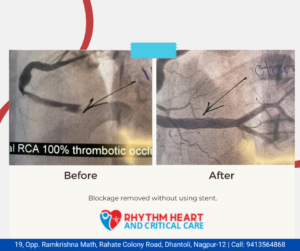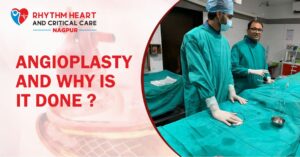Balloon valvotomy is an innovative medical procedure designed to treat heart valve stenosis without the need for open-heart surgery. This minimally invasive technique has revolutionized the management of valve disorders, providing patients with a safer and less invasive alternative to traditional surgical methods. In this blog, we will delve into the details of balloon valvotomy, exploring its benefits, procedure, and impact on heart valve health.
What is Balloon Valvotomy?

Balloon valvotomy, also known as balloon valvuloplasty, is a procedure used to widen a narrowed heart valve. The heart’s valves are crucial for ensuring that blood flows in the correct direction through the heart’s chambers. When a valve becomes stenotic, or narrowed, it can impede blood flow and cause various symptoms, including shortness of breath, chest pain, and fatigue. Balloon valvotomy aims to alleviate these symptoms by restoring proper valve function.
How Does Balloon Valvotomy Work?
The procedure begins with the patient receiving local anesthesia or light sedation. A catheter is inserted through a blood vessel in the groin or arm and carefully guided to the heart using imaging techniques like fluoroscopy. Once the catheter reaches the affected valve, the balloon is inflated. This inflation stretches the valve, breaking any adhesions and opening the valve leaflets. After sufficient widening, the balloon is deflated and removed, leaving the valve in a more functional state.
The entire process typically takes one to two hours, and because it’s minimally invasive, patients usually experience shorter recovery times compared to traditional surgical methods.
Conditions Treated by Balloon Valvotomy
Balloon Valvotomy is primarily used to treat various forms of valve stenosis, including:
- Mitral Valve Stenosis: Often caused by rheumatic fever, this condition leads to the narrowing of the mitral valve, restricting blood flow between the left atrium and left ventricle.
- Aortic Valve Stenosis: This condition involves the narrowing of the aortic valve, which can lead to symptoms like chest pain, fainting, and shortness of breath.
- Pulmonary Valve Stenosis: Commonly seen in congenital heart defects, this condition affects the pulmonary valve, reducing blood flow from the heart to the lungs.
Benefits :
- Minimally Invasive: Unlike open-heart surgery, balloon valvotomy is less invasive, resulting in reduced recovery time and lower risk of complications.
- Shorter Hospital Stay: Patients typically experience a shorter hospital stay compared to traditional valve replacement surgery.
- Quick Recovery: The minimally invasive nature of the procedure allows for a quicker recovery, enabling patients to return to their normal activities sooner.
- Effective Symptom Relief: Balloon valvotomy can effectively relieve symptoms associated with valve stenosis, improving the patient’s quality of life.
Indications :
Balloon valvotomy is primarily indicated for patients with aortic stenosis or mitral stenosis, two common types of valve stenosis. It is especially beneficial for patients who are considered high-risk candidates for open-heart surgery due to age, underlying health conditions, or other factors. The decision to perform balloon valvotomy is based on a thorough evaluation of the patient’s overall health, the severity of the valve stenosis, and the potential benefits of the procedure.
Post-Procedure Care and Considerations
Following a balloon valvotomy, patients are usually monitored for a short period to ensure there are no immediate complications. Most individuals can return to their regular activities within a few days, although some may require a brief period of rest. Regular follow-up appointments are essential to monitor the success of the procedure and to assess the need for any additional treatments.
Who is Suitable for Balloon Valvotomy?
Not everyone with valve stenosis is suitable for Balloon Valvotomy. The appropriateness of the procedure depends on several factors, including the type and severity of the stenosis, the patient’s overall health, and the structure of the valve. Balloon Valvotomy is most effective in patients with pliable, non-calcified valves. For patients with heavily calcified or scarred valves, surgical valve repair or replacement may be a more appropriate option.
Highlights:
Balloon valvotomy represents a significant advancement in the treatment of heart valve stenosis, offering a minimally invasive approach to improving valve function and alleviating symptoms. By expanding the narrowed valve, this procedure enhances blood flow and supports overall heart health. If you are experiencing symptoms of valve stenosis or are considering balloon valvotomy, consult with your cardiologist to explore whether this innovative procedure is suitable for you. At Rhythm Heart and Critical Care Hospital, under the expertise of Dr. Manish Juneja, we are committed to providing top-notch care and exploring the best treatment options for your heart health.
For more information on balloon valvotomy and other heart treatments, visit our website or contact us to schedule a consultation.
If you want to know about Aortic valvuloplasty, kindly go through the provided resources for better understanding.





